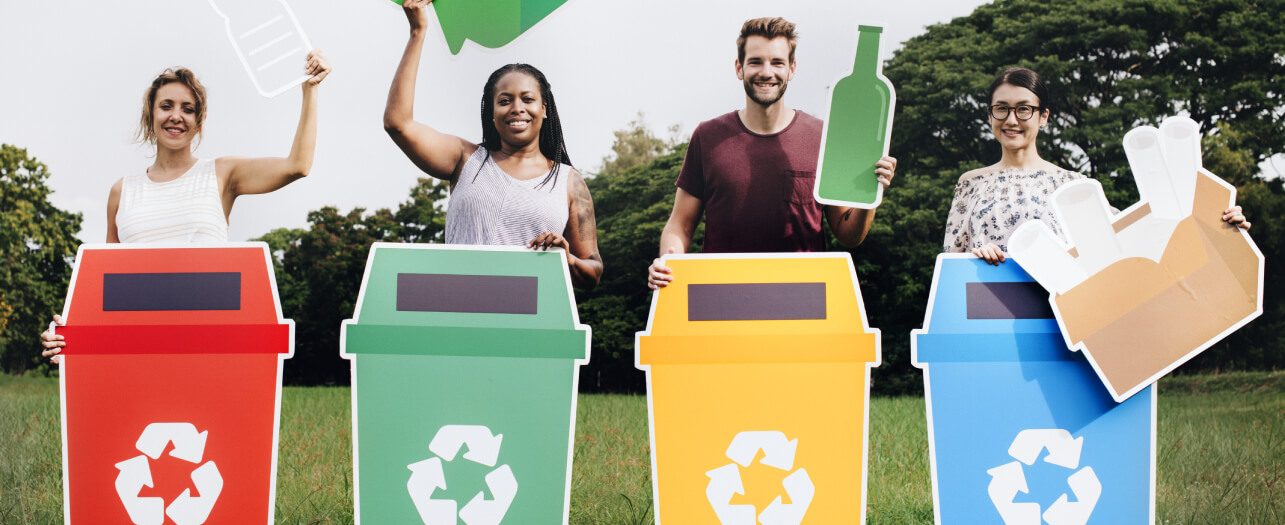As the world scrambles to adopt sustainability and an environmentally conscious lifestyle, many people are exploring alternative ways to dispose of their waste. The most common approach to this is participating in a circular economy and recycling their waste. The World Economic Forum suggests that there is a gradual increase in global recycling rates, which will increase to about 19% in 2022 as compared to 14% in 2005. As people get more involved and environmentally conscious, they’re beginning to adopt home recycling solutions and installing recycle bins at home.
Types of recycling bins for homes
Recycle bins for homes are mainly distinguished by their color. This distinction exists, predominantly to encourage segregated waste that can then be disposed of or recycled responsibly. While the color system can vary from region to region, it remains commonly identifiable for the most part.
Blue Bins - Blue recycle bins are for paper and cardboard. This includes the likes of office paper, cardboard boxes, cereal boxes, paper bags, and newspapers.
Yellow Bins - Yellow recycle bins are to dispose of plastics, cans, and cartons. These bins are meant for things like plastic bottles, soft drink cans, and juice cartons.
Green Bins - While green bins in some countries can be for biodegradable waste like food and other organic ingredients, it's meant for glass-based products in most regions. It's recommended to remove lids and wash glass products thoroughly before tossing them into these bins to avoid contamination and toxic waste produce.
Brown Bins - In countries where green bins are meant for glass waste, brown bins are meant for food waste, leftovers and organic waste.
Black Bins - Some areas employ black bins. These recycle bins are used in areas that generate landscaping waste (grass, yard trimmings, tree branches, etc.). Sometimes, black bins can also indicate mixed waste (non-biodegradable) like plastic, glass, metal, aluminum, and paper.

Other home recycling remedies
People also resort to other home recycling remedies. These can include composting, participating in community recycling initiatives, adopting zero-waste lifestyles, and upcycling. Large residential areas can deploy skip recycling bins strategically to collect, store, and manage the collective waste from the area.
There are many forms of recycling and while community-driven recycling initiatives and industrial efforts are slowly becoming a part of the mainstream, individual households are also beginning to partake in the initiative by self-recycling and installing recycle bins in their homes.


